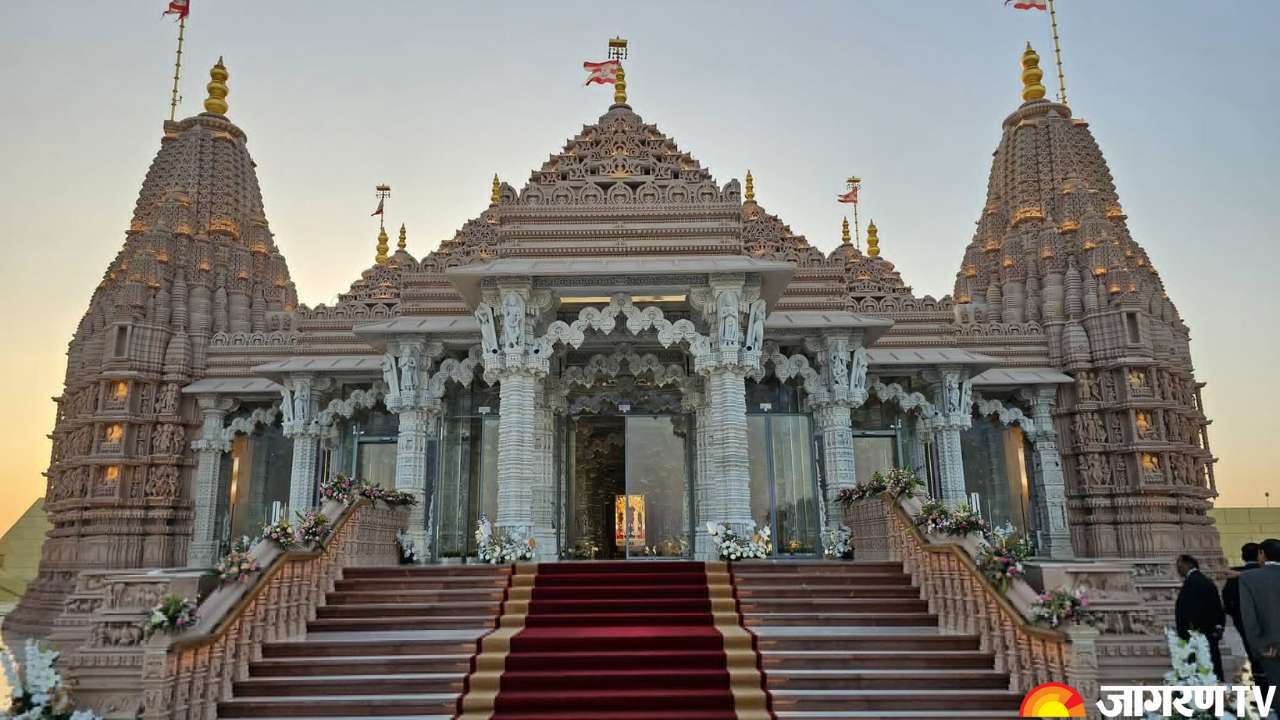BAPS UAE Temple: Abu Dhabi’s First Hindu Mandir Is A Blend of Culture And Technology

BAPS Abu Dhabi Temple: As Amazon Founder Jeff Bezos said “I predict the 21st century is going to be the Indian century,” the world is currently witnessing a significant growth of India in every field, be it IT, tourism, economy, and other various aspects. Not only technology, but the country is also preserving and glorifying the cultural heritage of our Indian roots with art, architecture, and scriptures. After the grand inauguration of the most awaited Ram Mandir in Ayodhya, India is writing another chapter in its history by expanding the spiritual beliefs of our vast culture on the soil of UAE. Prime Minister Narendra Modi recently inaugurated the first temple in the arab country and addressed the moment as a “New Golden Chapter” in UAE’s history. PM Modi praised the UAE government’s contribution to the building of the BAPS Hindu Mandir, stating that the temple will stand as a testament to harmony and unity.
BAPS Hindu Mandir Architecture
Inaugurated on February 14, the BAPS Hindu Temple in Abu Dhabi will be opened to the public from March 1, 2024. The BAPS Swaminarayan Sanstha constructed the temple on a 27-acre plot of land in Abu Mreikhah, close to Al Rahba, off the Dubai-Abu Dhabi Sheikh Zayed Highway. Among its many remarkable architectural features are a 3,000-person prayer hall, a community center, an exhibition hall, and more. According to the authorities, the temple includes seven shikhars, or spires, constructed to symbolize the seven Emirates that make up the United Arab Emirates. The seven spires contain idols of deities such as Lord Ram, Lord Shiv, Lord Jagannath, Lord Krishna, Lord Swaminarayan (considered a reincarnation of Lord Krishna), Tirupati Balaji, and Lord Ayappa.
BAPS UAE Hindu Temple Features
The opulent temple was constructed with an age-old method of building and creating that is referenced in the Hindu scriptures, the Shilpa and Sthapathya Shastras, which explain the craft of designing and building mandirs. More than 300 sophisticated sensors were used in the construction of the BAPS Hindu Mandir to track seismic activity and measure temperature. The foundation of the temple is made with fly ash, replacing 55 percent of cement and concrete mix, lowering the structure’s carbon footprint. In addition, the temple was built without the use of any metal.
At the BAPS Hindu Temple inauguration in Abu Dhabi, PM Modi's words resonate with patriotism.
— Shankar Lalwani - #IndoreAhead (@iShankarLalwani) February 14, 2024
"I worship Maa Bharti. Every moment that God has given me is for Maa Bharti." - PM @narendramodi Ji#BAPSHinduMandir #AbuDhabi #UAE
pic.twitter.com/ZPUWRnDuFb
The first Hindu temple in Abu Dhabi was built using the same Nagara architectural style as the Ram Temple in Ayodhya. Skilled craftsmen from Rajasthan and Gujarat painstakingly crafted over 25,000 stone pieces, eighteen lakh bricks, and seven lakh manhours to create the temple. In addition to fifteen Indian stories, such as those from the Ramayana and Mahabharata, the temple also features representations of stories from the Mayan, Aztec, Egyptian, Arabic, European, Chinese, and African civilizations. The interior of the temple is made of white Italian marble, while the exterior walls are built from Indian sandstone. Other features include two domes named “Dome of Peace” and “Dome of Harmony,” as well as 12 dome-like structures and 402 pillars. The Dome of Harmony highlights five natural elements: water, fire, air, earth, and space. The temple also includes animal carvings of horses and camels, representing the UAE.
BAPS UAE Temple Cost
The temple is built at a cost of approximately Rs 700 crore with funding and land donations by the UAE government and leadership. The temple is unique for reusing materials in the construction. The temple’s furniture, which includes prayer halls and a cafeteria, is made from wooden trunks and containers used to transport stones from India, giving it a touch of authenticity and sustainability. The temple’s foundation stone was laid in 2019 with land donations from the UAE government, serving as a symbol of Indo-UAE friendship.







